Recent Articles
Popular Makes
Body Types
10 Things You Need to Know About the 2018 Dodge Demon
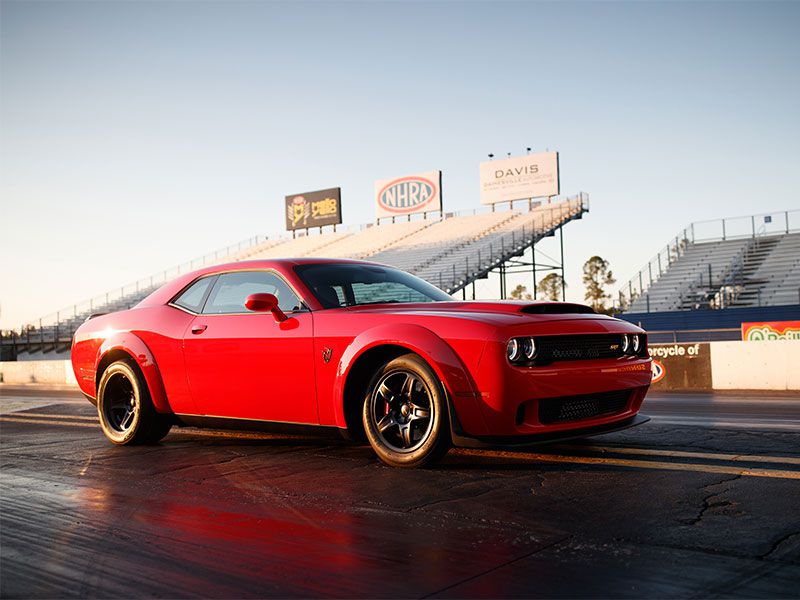
2018 Dodge Demon exterior profile at dragstrip ・ Photo by Dodge
At a time when auto industry publicity mills are working overtime to create excitement about cars propelled by electricity or capable of driving themselves, the engineering teams at Fiat Chrysler Automobiles have a more traditional focus: muscle.
And the 2018 Dodge Demon is the ultimate expression of Motown muscle. For those who like to manage massive horsepower and view the onset of autonomous vehicles with zero enthusiasm, FCA — the Dodge division in particular — has a powerful prescription with a Hemi menu that ranges from hot to volcanic.
1. The focus here is drag racing.
The Demon was conceived for exactly one purpose — to burn up that quarter-mile, i.e., the drag strip. Its engineering team includes veteran drag racers, and every element of the car's technical development was made with that goal. While this makes the Demon unique among contemporary production cars, and perhaps in U.S. production history, it's a very narrow focus from a market perspective. That’s why the Demon will be a limited-production item.
And while the engineering team hopes owners will take their cars to the strip, the internal expectation is that many Demons will wind up stowed in garages while their value appreciates. Because of limited production and the unique nature of the car, the Demon is an instant collectible.
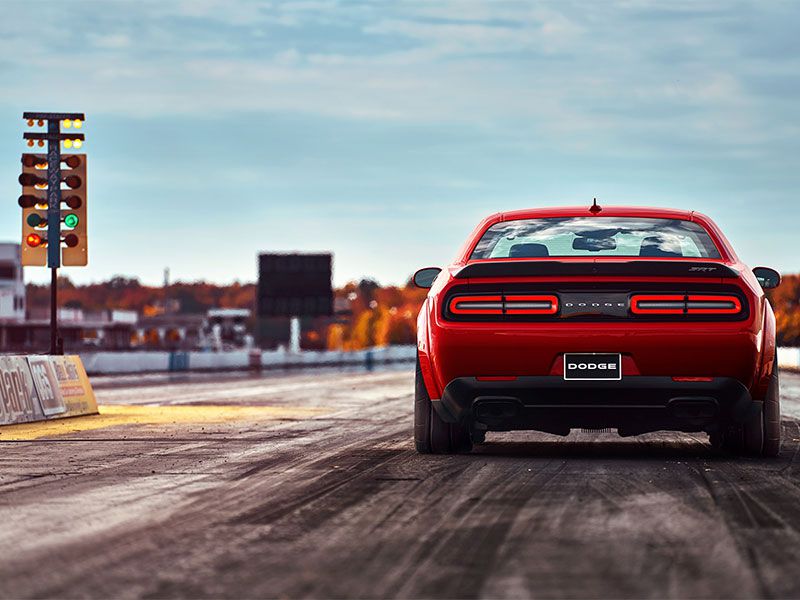
Photo by Dodge
2. It's history’s hottest Hemi.
The Hellcat Hemi V8 has provoked no end of oohs and ahs since its introduction — as well it might, with 707 horsepower and 650 pound-feet of torque. But the Demon version of this 6.2-liter engine makes the Hellcat look almost tame. Almost. While the displacement of the Demon Hemi is the same as that of the Hellcat, the internal differences between the two engines are extensive. In the Demon, all the internal components are beefier, particularly the crankshaft, and a bigger supercharger huffs up more boost.
The net: 808 hp and 717 lb-ft running on 91-octane premium, or 840 hp and 770 lb-ft on 100 octane. The engine is allied with a ZF eight-speed automatic transmission — unlike on the Hellcat, there’s no manual option — and this, too, has been extensively fortified to handle the increased thrust. Chrysler Hemis go back to 1951. Will the Demon be the culmination of this powerful series? One thing is certain: This is the most powerful production car engine ever offered in the U.S.
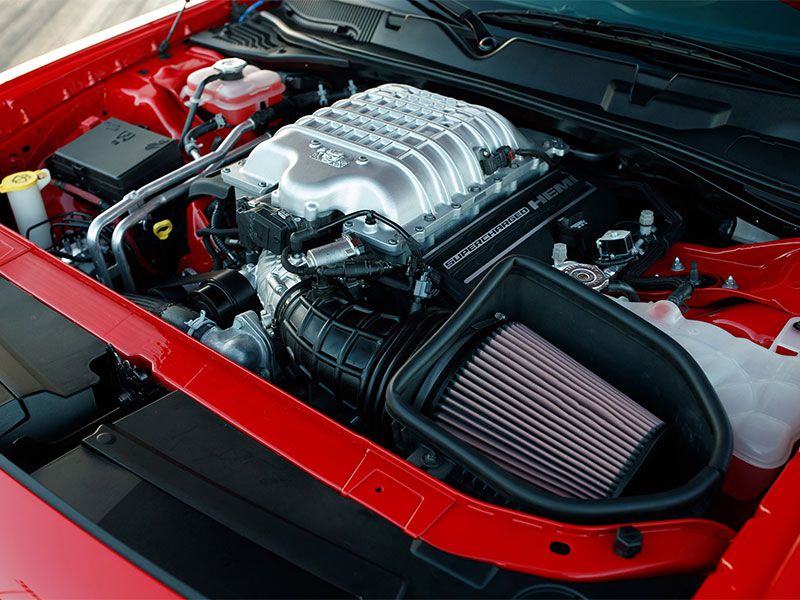
Photo by Dodge
3. There's been painstaking attention to weight reduction.
Weight is the enemy in any performance equation, including acceleration. Accordingly, the Demon team devoted a lot of attention to whittling a little over 200 pounds from the Challenger’s substantial mass (4,449 pounds in regular Hellcat trim, 4,498 with the optional widebody package).
No area of the Challenger escaped scrutiny in this regard — smaller brake package, smaller wheels — but the element that shows just how serious the team was about paring the Demon’s curb weight is the lug nuts. The lug nuts holding most wheels on their hubs have solid tops. For the Demon, the team created hollow lug nuts, with just enough material to do their job. Total weight savings for all 20 lug nuts: eight ounces.

Photo by Dodge
4. Launch is as simple as one, two, three, four, five, etc.
Extracting maximum acceleration with the Demon isn’t as easy as simply tramping on the throttle. Far from it. The center touchscreen lets the driver know when the engine coolant temperature is low enough for an optimum run. Then the driver taps the screen to get the car into drag mode, disabling the air conditioning and enabling the SRT Power Chiller, minimizing intake temperature.
Another touch on the screen summons high output, the full 840 hp, provided the engine is burning 100-octane fuel. There follows a complex series of operations, culminating in a final release of one of the shift paddles and the Demon hustles down the strip as though possessed by, well, a demon.
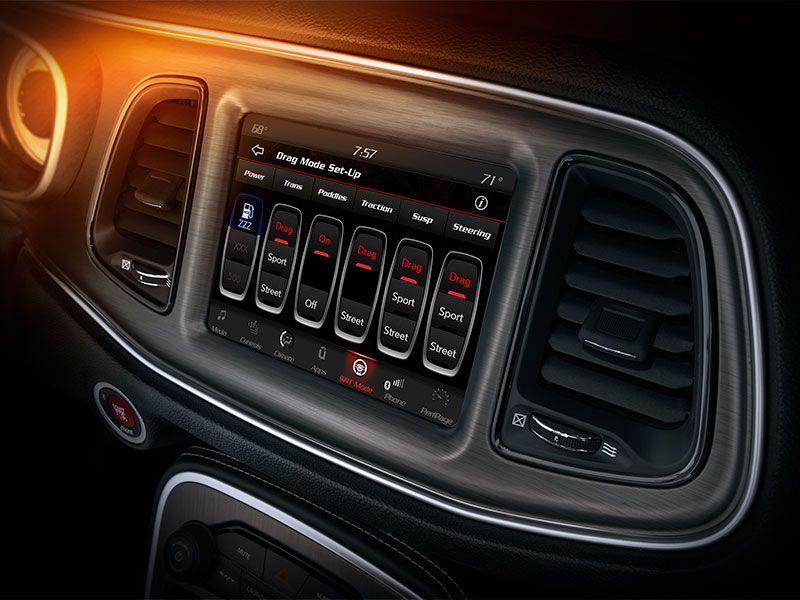
Photo by Dodge
5. It goes 440 yards in less than 10 seconds.
With all the max launch presets handled, the driver is ready for a pre-run burnout, smoking the rear tires to generate heat, thus enhancing grip off the line. Then it’s a matter of keeping the Demon pointed straight as it leaps from the starting pad — the front wheels come off the ground — and down the strip.
In perfect conditions, with careful attention to the launch sequence, the Dodge drag racers have demonized the quarter-mile in 9.65 seconds. For contrast, road tests of the Challenger Hellcat have produced times about two seconds slower. This is prodigious acceleration for a production automobile.
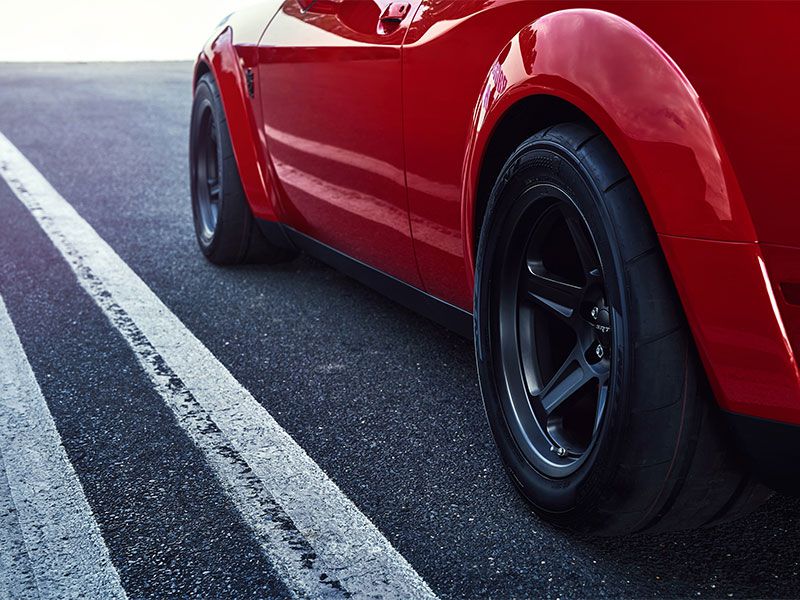
Photo by Dodge
6. Is the Demon really outlawed by the NHRA?
FCA publicists made much of this when the Demon was unveiled at last April’s New York Auto Show. The implication is that the car is such a bullet that it's somehow ineligible for some not-quite-defined level of National Hot Rod Association drag racing. There is an element of truth in this assertion.
Per NHRA safety regs, any car that covers the quarter-mile in less than 10 seconds must be equipped with a roll cage. As noted, with 100-octane fuel in the tank, the Demon is capable of sub-10-second quarter-miles, according to Dodge. For liability reasons, roll cages aren’t on the Demon’s option list. Owners seeking to exploit extract max performance from their Demon can have a roll cage installed elsewhere. On the other hand, if the owner stays above that 10-second threshold, the Demon is fine for the strip as delivered. This could be achieved as easily as running 91-octane premium fuel rather than 100-octane.
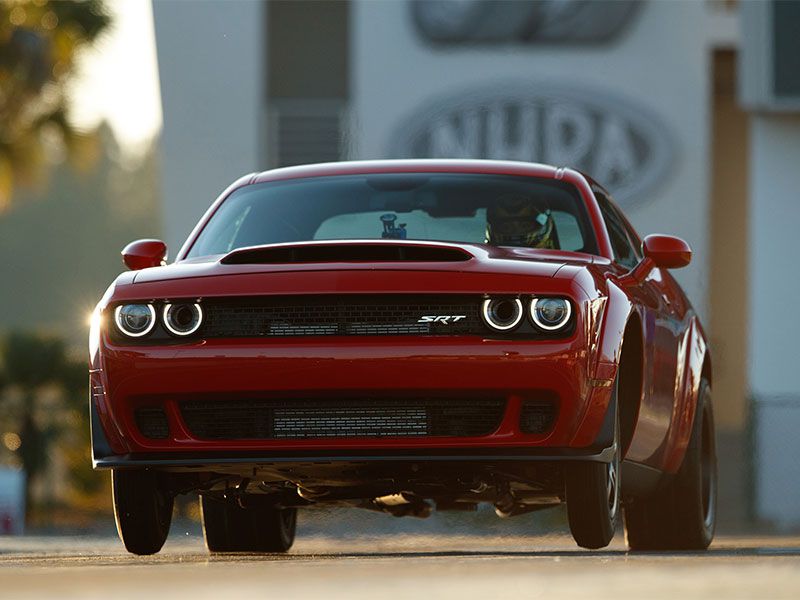
Photo by Dodge
7. Can the Demon be a daily driver?
For all its explosive dragstrip potential, the Demon can be surprisingly docile on public roads. The suspension is actually a little softer than that of the Challenger Hellcat, tuning designed to enhance getaway traction. And for ordinary street driving, the throttle response isn’t as abrupt.
But does this mean the Demon is suitable for everyday use? Not really. It comes without a rear seat to save weight, and even the front passenger seat is a delete option. You’d hate to deal with those Nitto drag racing tires in really wet weather. Aquaplaning guaranteed. The regular Hellcat (if the Hellcat can be called regular), extreme as it is, is a far better choice for everyday driving.
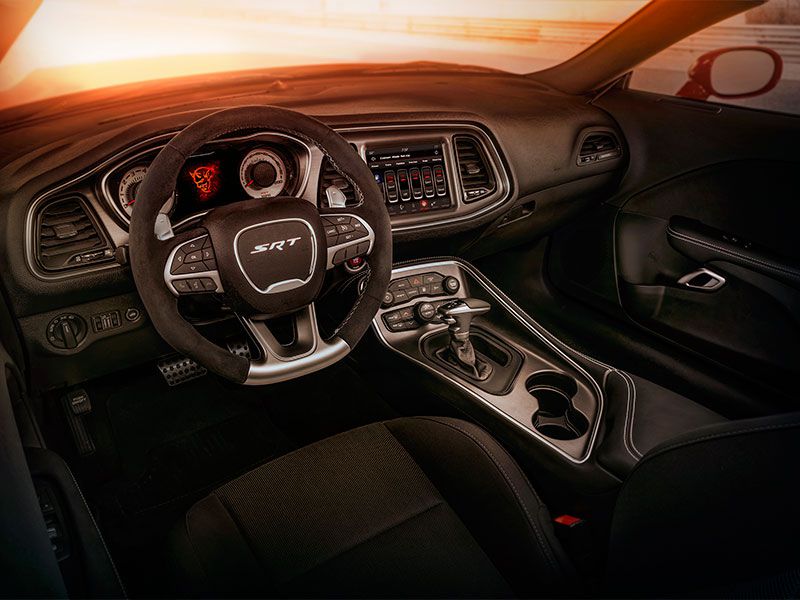
Photo by Dodge
8. This isn't the first Demon.
The Demon version of the Challenger is aptly named, but it’s not the first. The name was originally applied in 1971 to a fastback coupe version of the popular Dodge Dart. It was distinguished from other Darts by a 5.6-liter V8 rated for 275 horsepower — peppy for its era, though a far cry from the horsepower in the latter-day Demon.
The original Demon’s timing was not auspicious, as the impact of the 1970 Clean Air Act marked the beginning of the end of the muscle car era. In 1971, ouput of the V8 was reduced to 240 hp, sales dropped precipitously, and by 1972 the Demon had been exorcised from the Dodge lineup.
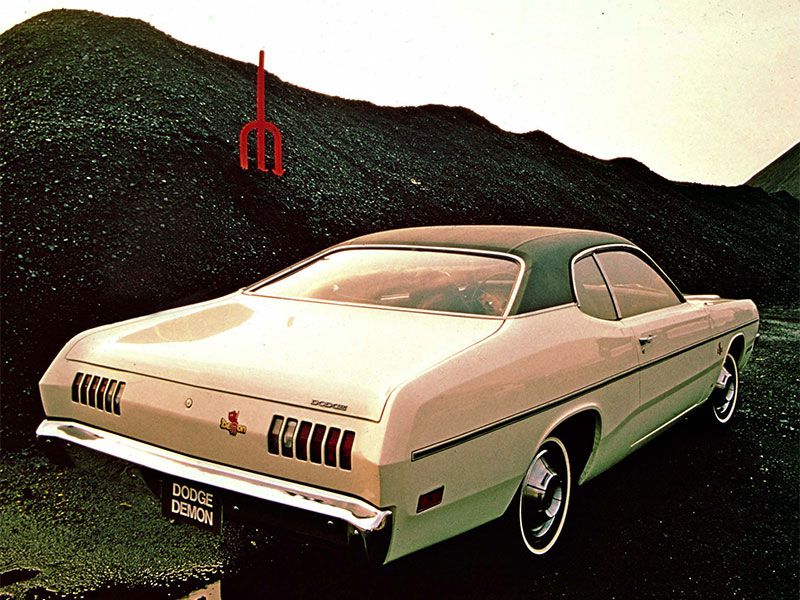
Photo by Dodge
9. The over-the-top muscle is backed by warranty.
The Demon’s reason for being is race track duty, plain and simple, a purpose that would normally eliminate any possibility of a factory warranty. However, the Demon is different. Dodge backs its ultimate production hot rod with the company’s standard warranty — three years or 36,000 miles bumper-to-bumper and, more remarkable, five years/60,000 miles of limited powertrain coverage.
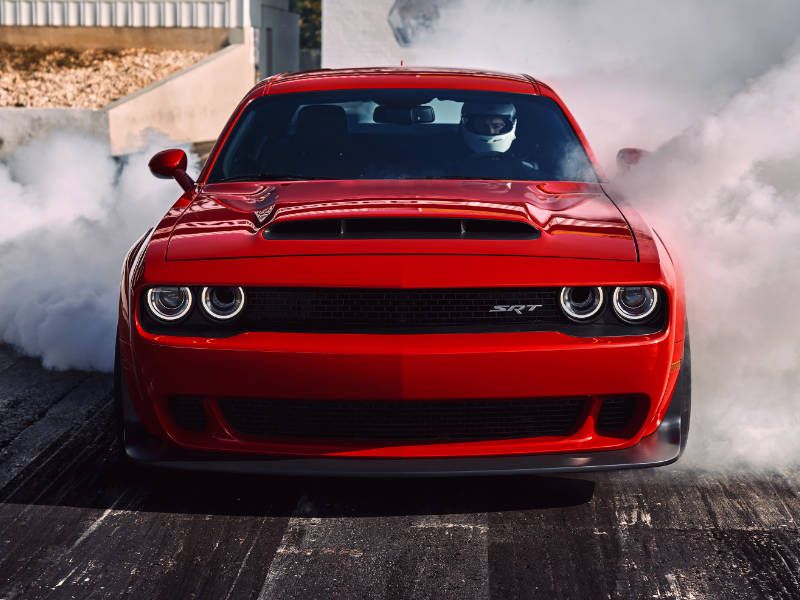
Photo by Dodge
10. The price of extreme performance rivals most luxury cars.
The MSRP for this most potent of all production cars is $84,390. That’s well into luxury territory, but this is clearly not a luxury car. And its focus — drag racing — is narrow, although it is not unruly on public roads. But if the objective is high performance and everyday usefulness, there are many better choices.
Practicality is obviously not part of the Demon’s allure. Its appeal is simple: It’s unique. And it’s a limited-production item — 3,000 cars for the U.S. market and 300 for Canada. Collectors are gathering as we speak.
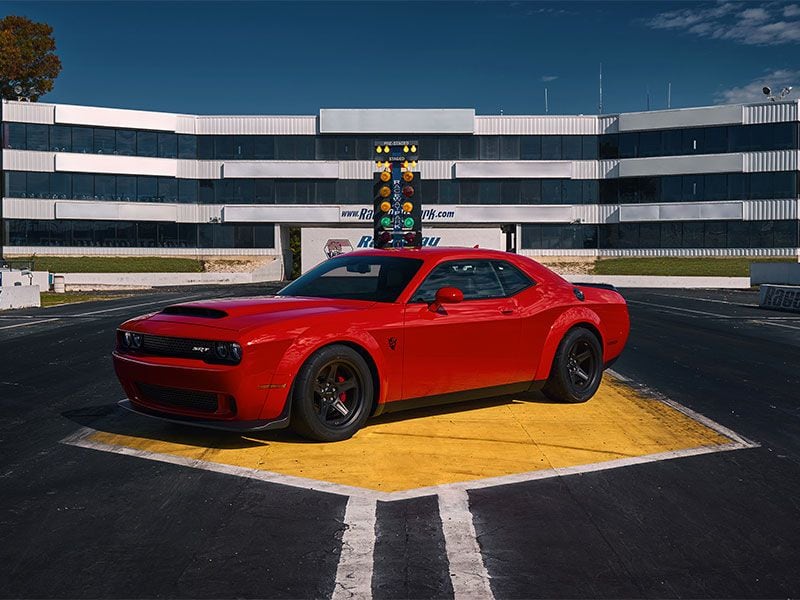
Photo by Dodge